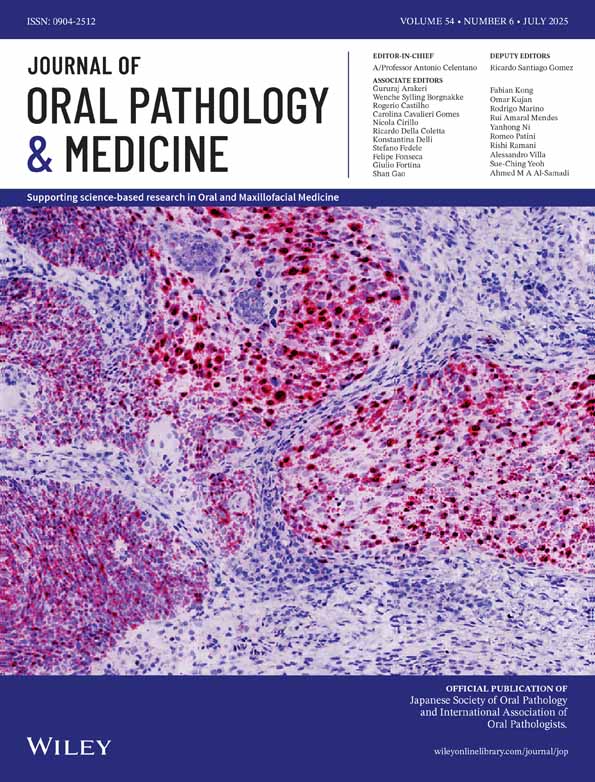Oral mucosal Langerhans’ cells as target, effector and vector in HIV infection
Abstract
Abstract: The mechanism underlying a transition of the oral cavity mucosal epithelium towards susceptibility to opportunistic infections in HIV-seropositive patients was investigated. Phenotypic markers CD1a, HLA-DR, and CD86 of oral mucosal Langerhans’ cells (LCs), p17 core protein of human immunodeficiency virus (HIV), and CD45RO of memory T cells were labeled on oral hairy leukoplakia lesional biopsies and clinically normal autologous tissue of HIV-infected patients. HIV p17 protein was detected in association with mucosal LCs, mainly within the lesional epithelium. There were significant correlations between the detection of HIV p17 and the depletion of LCs, and between the depletion of LCs and the presence of hairy leukoplakia lesions. Conjugates of activated LCs and memory T cells were also evident in the submucosal area of lesional biopsies. The findings from this study support the hypothesis that oral mucosal LCs are also the target of HIV infection. Cytopathic changes of LCs caused by productive HIV infection may contribute to selective depletion of LCs, which may impair the mucosal immunologic protection against colonization by microorganisms causing HIV-associated oral mucosal lesions.




